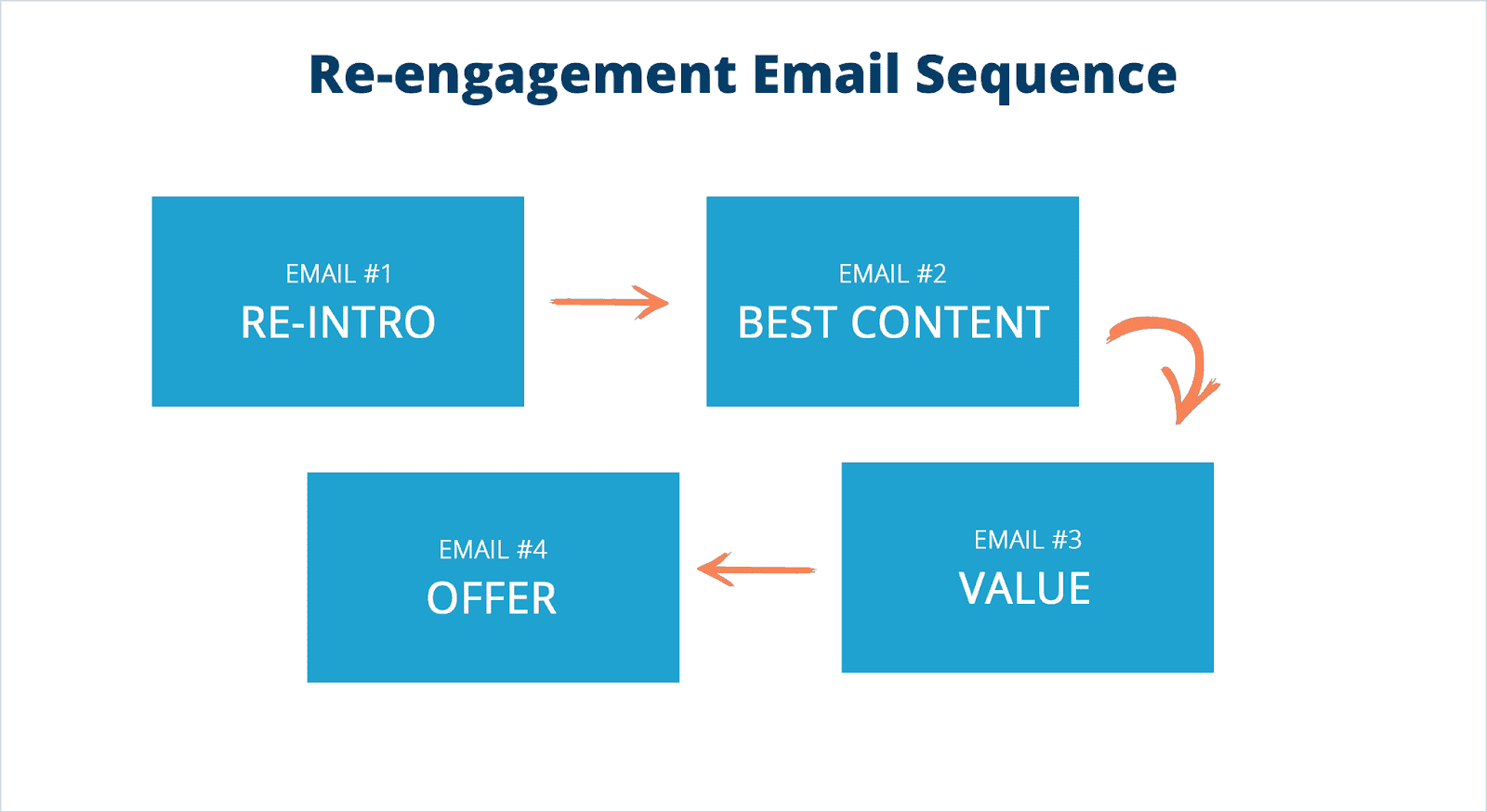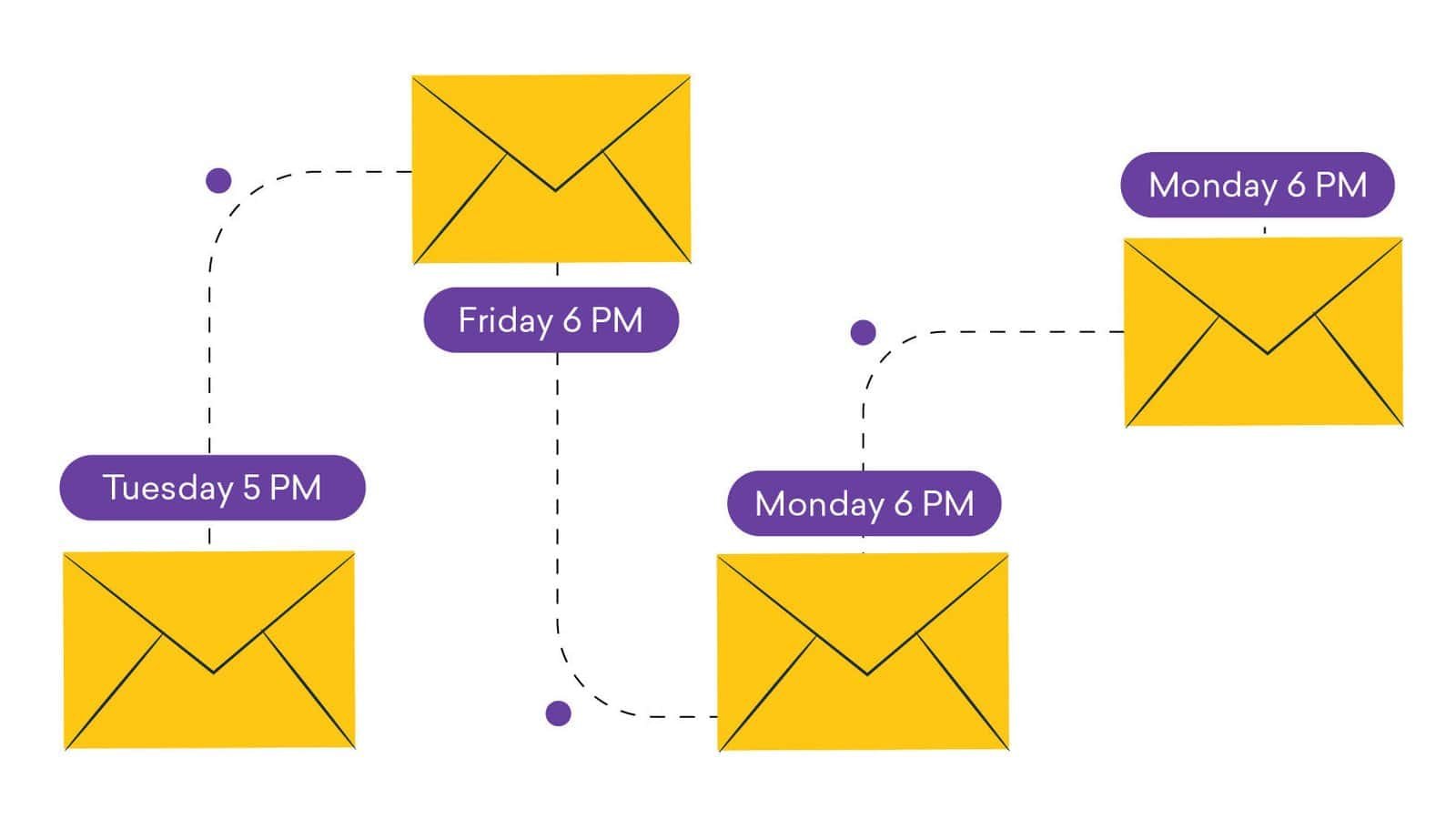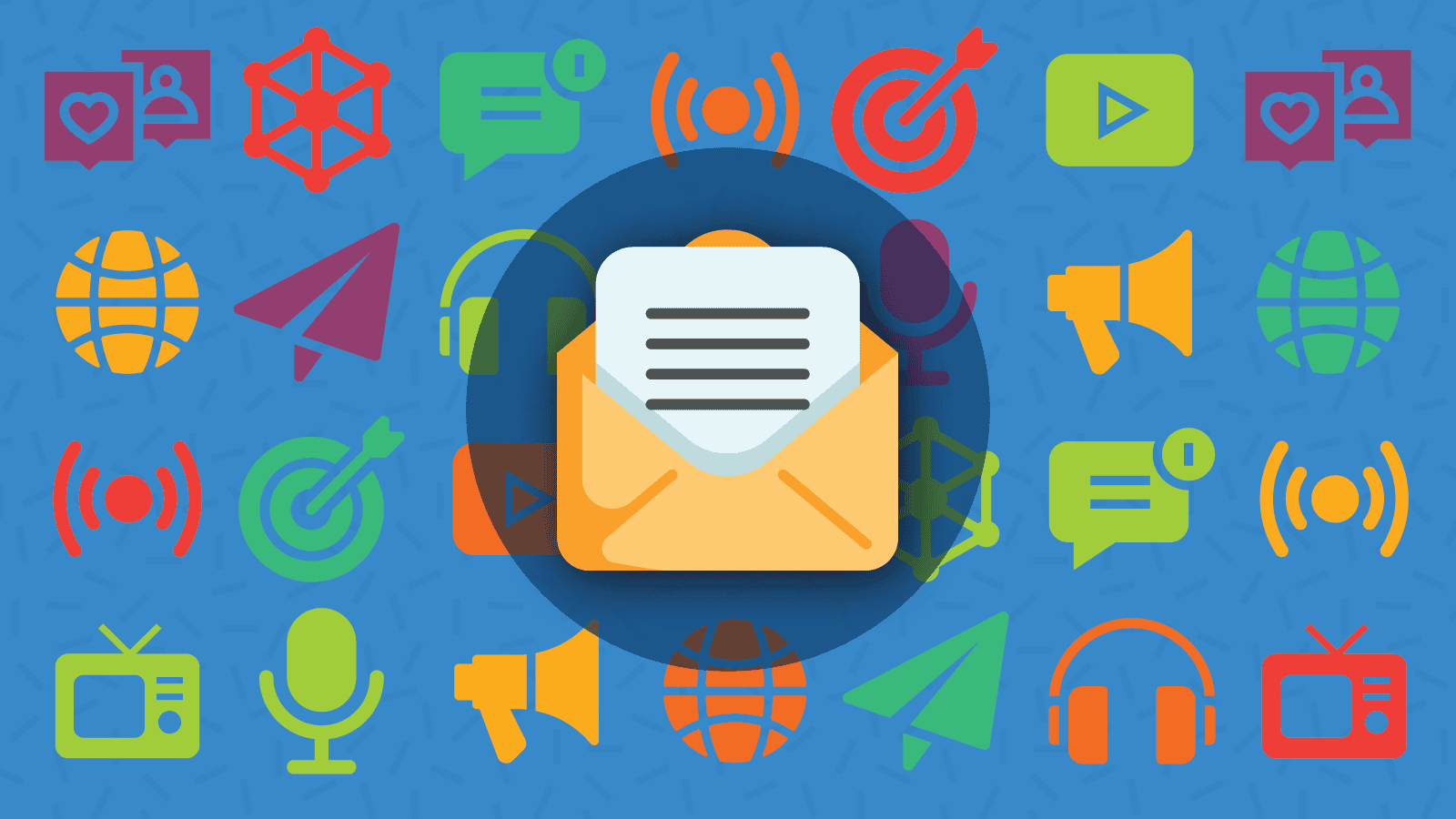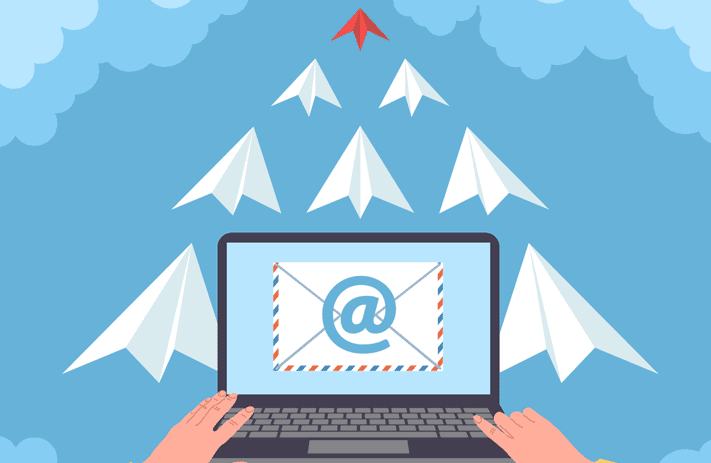Howdy! You good? Cold emailing can feel like shouting into the void sometimes. But it doesn’t have to! With the right approach, you can transform those chilly emails into powerful relationship-building tools that get you the results you crave. Okay, let’s dive into how to take your cold email strategy from zero to hero!
Dominate Deliverability: Get Your Email Ready To Rock
It’s tempting to jump right into crafting the perfect email and hit send, but hold on! Before you unleash a flood of emails, you need to warm up your email address. Imagine suddenly going from sending a handful of emails to blasting out tons of identical messages – that’s a big red flag to email providers, especially if your email address or domain is brand spanking new.
Think of it like this: you wouldn’t run a marathon without training first, right? The same goes for your email address. Email providers like Google are on the lookout for spam, so they’re suspicious of accounts that suddenly send tons of emails. To avoid getting flagged, you need to gradually increase your sending volume over time. Start small and build up slowly, showing Google that you’re a legitimate sender.
There are tools out there that claim to automate this warm-up process, but be wary. Google’s cracked down on many of them, and it’s best to stick with a self-guided approach. Send a few emails, get some replies, and repeat. It’s the safest way to build up your sending reputation.
Once your email is warmed up, you can turn your attention to deliverability tools that go beyond the warm-up phase. For instance, using custom tracking domains can boost your email deliverability. These tools ensure that your emails aren’t lumped together with other senders who might not be as careful about their sending practices.
To maximize your chances of landing in the inbox, take advantage of tools that analyze your campaigns and provide actionable insights. A spam solver can help you tweak your emails to avoid those dreaded spam filters. It’s like having a personal email coach, but without the awkward small talk!

Targeting Like a Pro: Finding the Perfect Prospects
You wouldn’t throw a party and invite just anyone, right? The same goes for cold emailing. The key to a successful campaign lies in pinpointing your ideal customer and understanding their needs like the back of your hand.
Start by crafting a detailed target customer persona. Think about their demographics, their industry, their pain points, and most importantly, how your offer solves their problems. Remember, people are more likely to engage with something that directly benefits them.
Once you’ve got your target customer nailed down, it’s time to hunt for their email addresses. There are tons of prospecting tools like Hunter.io, Snov.io, and Voila Norbert that can help you uncover those golden nuggets. But remember, quality trumps quantity!
If you’re in the B2B world, LinkedIn is your best friend. It’s a goldmine for connecting with potential leads and gathering valuable insights to personalize your emails. And hey, don’t forget about your existing network! Your email contact list and those of your colleagues might hold hidden gems just waiting to be discovered.
You can even unearth prospects from your inbox. Think about it – you’ve probably interacted with potential leads without even realizing it! GMass, for example, allows you to create a brand new mailing list from your Gmail search results. It’s like finding buried treasure in your own backyard!
One thing to steer clear of is buying email lists. They might seem like a shortcut, but trust me, they’re more trouble than they’re worth. Purchased lists are often riddled with low-quality addresses and can land you straight in the spam folder.
Once you’ve gathered your list, take the time to verify each email address. It’s an extra step, but it’s worth it to ensure you’re reaching real people. Tools like the free email address verification tool from GMass can help you weed out invalid addresses and avoid those annoying bounces.
Choosing The Ultimate Cold Email Platform
Your cold email platform is your trusty sidekick in the battle for inbox domination. You want a platform that speeds up your workflow, guarantees top-notch deliverability, and comes packed with features like scheduling, follow-ups, and reporting. And of course, you want a platform that’s upfront about any limitations so you don’t hit any unexpected roadblocks.
There are tons of cold email platforms out there, each with its own strengths and quirks. Here are a few popular options:
GMass: If you’re a fan of simplicity and efficiency, GMass is a solid choice. It integrates seamlessly with Gmail and Google Workspace, so you don’t need to learn a whole new system. GMass boasts powerful features like mail merge personalization, automated follow-ups, and detailed campaign analytics. And the cherry on top? It’s one of the most affordable platforms out there!
HubSpot: If you need a comprehensive marketing and sales platform, HubSpot is a strong contender. It offers advanced features for managing your entire sales funnel, but it might be overkill if you’re just looking for a dedicated cold email solution.
Woodpecker: Woodpecker offers a dedicated cold email tool and sales automation suite, but be prepared to pay per contact, and some features that are standard in other platforms come at an extra cost.
Mailchimp: If you’re familiar with email marketing, you’ve probably heard of Mailchimp. It’s a user-friendly platform for managing bulk email campaigns, but it might not be the best fit for high-volume cold outreach.
Mailshake: Mailshake caters to enterprise clients and emphasizes personalized outreach. It offers a robust feature set, but it comes with a mandatory sales demo and limits on sending volume.
Lemlist: Lemlist focuses on small, highly targeted campaigns and offers unique features like personalized video thumbnails. However, it’s not designed for large-scale cold outreach.
Remember, the “best” platform depends on your unique needs and budget. Take the time to explore your options and choose the one that aligns with your cold email strategy.

Personalization Ninja: Go Beyond “Hi [First Name]”
Let’s face it, nobody wants to feel like they’re just another name on a list. Personalization is the secret sauce that transforms your cold emails from generic blasts into engaging conversations.
Sure, starting with someone’s first name is a good start, but true personalization goes much deeper. You want to make them feel like you’ve done your homework and crafted a message just for them. Think of it as tailoring a suit – it’s all about the perfect fit!
Mail merge is your secret weapon for personalization. It lets you sprinkle personalized details throughout your emails, making each recipient feel special. Don’t just stop at first and last names. Get creative and leverage information like their company name, website, industry, recent achievements, or even a blog post they’ve written.
Want to take it up a notch? Use fallback values to ensure your emails still make sense even if you’re missing some data. For instance, instead of “Hi [First Name],” you could use “Hi [First Name|there]” to handle those cases where you don’t have their name.
Conditional content is another powerful tool that allows you to personalize entire paragraphs or sections based on specific criteria. Imagine sending one message to folks in the tech industry and a completely different one to those in healthcare – all in the same campaign!
Don’t be afraid to get really creative with mail merge personalization:
- Personalized links: Send each prospect a unique link to a landing page tailored to their interests.
- Personalized attachments: While not always appropriate for cold outreach, personalized attachments can be useful in other campaigns.
- Personalized images and videos: Imagine a video greeting with their name or a custom image showcasing their company logo.
- Personalized CC and BCC: Send copies to relevant team members or stakeholders to personalize the outreach process.
- Personalized To field: Include their name in the “To” field to make the email feel truly one-on-one.
Subject Line Sorcery: Crafting Click-Worthy Headlines
Your subject line is your first (and sometimes only) impression. It’s the digital equivalent of a storefront window – it needs to grab attention and entice people to come inside.
You might be tempted to write your subject line first, but here’s a pro tip: save it for last! That way, you can ensure it perfectly reflects the content of your email.
Here’s the recipe for a killer subject line:
- Clarity is key: Ditch the clickbait and make it crystal clear what your email is about.
- Personalize it: Using their first name can boost open rates, but even mentioning a relevant detail shows you’ve put in the effort.
- Highlight the value: Tease the benefits they’ll get from opening your email.
- Keep it concise: Aim for 6-10 words or less. Remember, most people are checking emails on their phones, so make sure your subject line fits on a mobile screen.
Stay away from clickbait! It might get people to open your email, but they’ll feel tricked and immediately hit the delete button. Remember, you’re building relationships, not playing games.
Here are a few subject line strategies to get those clicks:
- Value-driven subject lines: “A quick idea to boost your [topic of interest]” or “[Competitor] is outranking you for [keyword]”
- Urgency-infused subject lines: “Mark, free to chat next Thursday?” or “Only [number] seats left for [training]”
- Relevance-based subject lines: “[Industry] is struggling with [obstacle]” or “Most [target audience] make this mistake.”

Cold Email Copywriting: Crafting Compelling Content
Now for the heart of your cold email—the body copy. It’s where you truly connect with your prospects, showcase your value, and nudge them towards taking action.
Here are some strategies to help you craft compelling copy that converts:
- Offer, don’t ask: Busy professionals are bombarded with requests. Instead of asking for their time, offer something valuable upfront.
- Be specific and valuable: Ditch the vague generalizations and offer concrete solutions, data, resources, or insights.
- Focus on them, not you. Make it all about how you can help them achieve their goals or overcome their challenges.
- Keep it concise: Respect their time and get to the point quickly. No one wants to wade through a wall of text.
Cold email templates can be a great starting point, but don’t just blindly copy and paste. Adapt them to your specific audience and offer. Here are a few templates to get you started:
Basic Outreach Email:
- Start with a personalized compliment.
- Briefly introduce yourself and highlight your relevance to their industry or needs.
- Provide a specific example of your work or value proposition.
- End with a clear call to action, such as asking if they’d be interested in learning more.
Networking Email:
- Open with a compliment that connects their work to a relevant talking point.
- Engage them with a thought-provoking question or insight.
- Keep it short and sweet to encourage a quick response.
Demo Email:
- Introduce yourself and your company and clearly state the value of your product.
- Briefly explain the benefits without getting bogged down in technical details.
- Offer a demo and make it easy for them to schedule a call.
Services Email:
- Start with a personal connection, such as mentioning you’re a fan of their work.
- Highlight your relevant experience, results, or social proof.
- Generate curiosity by hinting at a specific solution you can offer.
- End with a call to action to schedule a consultation.
Scheduling Savvy: Timing is Everything
Think about it—you probably wouldn’t appreciate a sales call during your morning coffee or late at night. The same goes for cold emails! Timing is crucial to getting your messages seen and read.
Most cold email platforms offer scheduling features that allow you to send emails at the optimal time for your audience. Do you want to be the first thing they see in the morning? Or maybe catch them during their lunch break? Choose the time that aligns with their schedule and maximizes your chances of engagement.
Weekends are generally a no-go. People are more likely to be enjoying their time off than checking work emails. Use your platform’s scheduling options to skip weekend sending and avoid annoying your prospects during their downtime.
Recurring campaigns are a fantastic way to stay top of mind without lifting a finger. Set up a schedule that automatically sends your email to new prospects as you add them to your list. It’s like having a virtual assistant working tirelessly in the background!

Mastering the Art of the Follow-Up
Let’s face it, people are busy. Just because someone didn’t reply to your first email doesn’t mean they’re not interested. It might have gotten lost in the inbox shuffle or simply slipped their mind. That’s where follow-ups come in!
Automated follow-up sequences are your secret weapon for staying top of mind and nudging prospects towards taking action. Set up a series of emails that automatically go out after a certain period of time, reminding them of your offer and providing additional value.
Here are some tips for crafting effective follow-up emails:
- Send them as replies: Keep all your communication in one thread to avoid cluttering their inbox.
- Personalize each message: Reference previous interactions or touch on their specific needs.
- Space them out appropriately: Find the sweet spot between persistence and annoyance.
- Stop when they reply: Once you get a response, pause the sequence to avoid seeming pushy.
Reply templates can be a lifesaver when those responses start pouring in. You can set up pre-written responses to common questions or use sentiment analysis tools to automatically categorize replies and tailor your responses accordingly.
A/B Testing: Fine-Tuning for Optimal Results
You wouldn’t launch a website without testing it, right? The same goes for your cold emails! A/B testing is your secret weapon for continually improving your campaigns and maximizing your results.
A/B testing allows you to compare different versions of your emails to see what resonates best with your audience. You can test elements like subject lines, email copy, calls to action, and even sending times. The platform will automatically send different variations to segments of your list and track which one performs best. The winning version is then sent to the rest of your audience, ensuring you’re always sending the most effective message.
Campaign analytics are your treasure map to understanding what’s working and what needs improvement. Track key metrics like open rates, click-through rates, and reply rates to identify patterns and optimize your future campaigns.
Conclusion
Okay, that was a lot! But trust me, mastering these strategies will transform your cold email game and take your business to new heights. Remember, cold emailing is a powerful tool for building relationships, generating leads, and driving sales. By implementing these tips, you can turn those icy emails into warm leads and loyal customers. To maximize your success, don’t hesitate to experiment with different cold email marketing strategies and track your results. Analyze what resonates with your audience and continuously refine your approach. The more you adapt and optimize, the better your chances of converting those leads into long-term clients.
FAQs
What’s a good cold email response rate? A good cold email response rate can range from 1-5%, with anything over 5% considered excellent. Remember, the key is to focus on quality over quantity. By targeting the right prospects, personalizing your messages, and providing value upfront, you can significantly increase your response rates.
What are some good examples of cold email subject lines? Effective subject lines are clear, concise, and pique the reader’s interest. Consider using their name, highlighting a benefit, or creating a sense of urgency. Here are a few examples:
- “[First Name], I have an idea to help you [solve problem].”
- “Boost your [metric] by [percentage] with this simple strategy.”
- “[First Name], are you free for a quick chat next week?”
Is cold email legal? Yes, cold emailing is legal as long as you comply with regulations like the CAN-SPAM Act in the United States. This means you need to include your real name and contact information, provide a clear unsubscribe option, and avoid deceptive subject lines.
Remember, building a successful cold email strategy takes time and effort. Don’t be afraid to experiment, track your results, and continually refine your approach. With the right mindset and strategies, you can turn cold emailing into a powerful engine for growth and success. Good luck, You got this! Consider leveraging personalization and segmentation in your cold email outreach strategies to increase engagement and response rates. By understanding your target audience and tailoring your messages to their specific needs, you can significantly improve your chances of making meaningful connections. Stay persistent, and remember that each outreach effort is a step closer to mastering your craft. Consider incorporating personalization and value-driven content in your outreach to capture your recipient’s attention. Additionally, leverage data analytics to understand what resonates best with your audience and supercharge your cold emails for even greater impact. By staying committed to refining your tactics, you’ll enhance your engagement rates and drive meaningful conversations.

